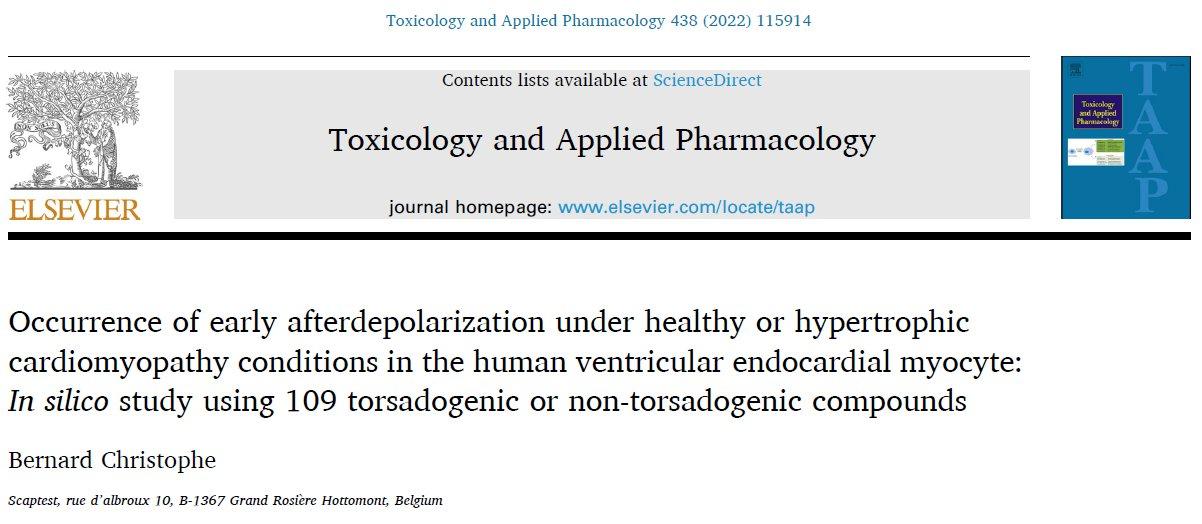
Occurrence of early afterdepolarization under healthy or hypertrophic cardiomyopathy conditions in the human ventricular endocardial myocyte: in silico study using 109 torsadogenic or non-torsadogenic compounds
Toxicology and Applied Pharmacology, 438: 115914
https://www.sciencedirect.com/science/article/abs/pii/S0041008X2200059X PMID: 35150662
read and download for free from the following link provided by Elsevier until April 05, 2022: https://authors.elsevier.com/a/1eb1w_,5zwpSdx
The goal of the CiPA initiative (Comprehensive in vitro Proarrhythmia Assay) was to assess a more accurate prediction of new drug candidate proarrhythmic severe liabilities such as torsades de pointes, for example. This new CiPA paradigm was partly based on in silico reconstruction of human ventricular cardiomyocyte action potential useful to identify repolarization abnormalities such early afterdepolarization (EAD), for example. Using the ToR-ORd algorithm (Tomek-Rodriguez-O'Hara-Rudy dynamic model), the aim of the present work was (i) to identify intracellular parameters leading to EAD occurrence under healthy and hypertrophic cardiomyopathy (HCM) conditions and (ii) to evaluate the prediction accuracy of compound torsadogenic risk based on EAD occurrence using a large set of 109 torsadogenic and non-torsadogenic compounds under both experimental conditions. In silico results highlighted the crucial involvement of Ca++ handling in the ventricular cardiomyocyte intracellular subspace compartment for the initiation of EAD, demonstrated by a higher amplitude of Ca++ release from junctional sarcoplasmic reticulum to subspace compartments (Jrel) measured at EAD take-off voltage in the presence vs. the absence of EAD initiated either by high IKr inhibition or by high enough concentration of a torsadogenic compound under both experimental conditions. Under healthy or HCM conditions, the prediction accuracy of the torsadogenic risk of compound based on EAD occurrence was observed to be 61 or 92%, respectively. This high accuracy under HCM conditions was discussed regarding its usefulness for cardiac safety pharmacology at least at early drug screening/preclinical stage of the drug development process.